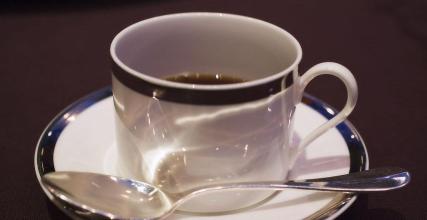Yega Chuefei Adoto Coffee with the sweetness of Brown Sugar the flavor and taste of the manor produce fine coffee.
This sun-treated Yega Chuefei Aretha G1 has the aroma of apricot and jasmine, with the flavor of apricot, red wine, mango and pineapple, with the sweetness of honey and brown sugar, and a lingering finish with a touch of cardamom and cocoa. After the coffee has changed temperature, it brings out very lively and bright citrus and blueberry acidity, which is very soft and attractive, as if the whole body is soaked in the sea in early autumn, slapped by the cool sea. Full of impact and stretching tenderness.
In order to highlight the more obvious flavor and lively acidity of the whole bean, we use light baking to bake the beans until the end of the explosion. However, Maoye personally prefers the flavor of dense beans, and the acidity is stronger, but baking to the end of the explosion will make the flavor of the whole bean more complete, sweetness and finish more beautiful, for the sake of overall balance, it does have to sacrifice a little bit of acidity. The so-called "Yega Chuefei" refers to strong aromas of jasmine, lemon or green citric acid, as well as sweet peaches, almonds and tea. The author's tasting experience has only one sentence: "Coffee entrance, flowers in full bloom!" Except for the comfort of the taste buds and olfactory cells in the nasal cavity touched by flowers. In addition to the fragrance of flowers, the delicate mellow thickness is like silk and feels wonderful to the touch. At present, many coffee chemists have begun to study the microclimate and soil and water around Yega Xuefei, in order to sum up the planting equation of fine coffee. Most coffee beans are washed with water, but a small number of crystal beans deliberately use the method of tanning. To enhance the charming fruit aroma and mellow thickness. These mountain villages are foggy, like spring all year round, with a gentle breeze in summer, cool but not hot, rain but not damp, and no cold damage in winter, giving birth to a unique "regional flavor" of citrus and flower fragrance. Caffeine F trees are mostly planted in farmers' own backyards or mixed with other crops in farmland, and the yield per household is not much, which is a typical pastoral coffee. Almost all of the award-winning beans come from the above-mentioned coffee villages and communities. At first, Yega Xuefei's coffee trees were planted by European monks (somewhat similar to Belgian monks who advocated planting wheat and brewing beer), and later transferred to farmers or cooperatives. Yejasuefei is actually built by surrounding coffee communities or cooperatives, including Edido, Hafsha, Hama and Bdon near Fog Valley. Strictly speaking, Yegashafi is a by-product area of Sidamo. Located in the northwest of Sidamo, with mountains and lakes, the town is one of the highest coffee-producing areas in Egypt. However, the mode of production and flavor here are so outstanding that Egyptian coffee farmers compete to be proud of the flavor of their coffee, so they are independent from Sidamo and form their own school. Yejasuefei, the most famous producing area in Africa, is a small town with an altitude of 120000m and 2100 meters above sea level. It is also the generation of Ethiopian boutique beans.

Noun. It has been a wetland since ancient times, and the ancient saying "Yega" means "settle down", and "Xuefei" means "wetland", so "Yejia Xuefei" means "Let's settle down in this wetland."
Important Notice :
前街咖啡 FrontStreet Coffee has moved to new addredd:
FrontStreet Coffee Address: 315,Donghua East Road,GuangZhou
Tel:020 38364473
- Prev

Puerto Rican coffee flavor taste manor producing area characteristics of fine coffee beans introduction to Larez Yaoke Coffee
Puerto Rico's coffee beans are carefully planted, pure, aromatic and heavy, of which the best coffee is Yauco Selecto, which means Selecto. Yaocote Coffee is grown only on three farms in the southwest of the island, San Pedro, Caracolillo and La Juanita. It is a truly high-quality coffee with a strong flavor and a long aftertaste. Puerto Rico
- Next

Jasmine fragrant Yega Chuefei Coffee Woka Coffee Flavor Coffee
Yega snow coffee has always been famous in the eyes of coffee connoisseurs all over the world. the rare washed high-quality Elaraby plus coffee is suitable for all degrees of roasting, showing a fresh and bright aroma of flowers and fruits, beautiful and complete bean shape. is the general mocha is incomparable to the high-end coffee. This coffee has a unique aroma, showing the flavor of citrus and lemon and the fragrance of jasmine, with soft medium roasting.
Related
- Detailed explanation of Jadeite planting Land in Panamanian Jadeite Manor introduction to the grading system of Jadeite competitive bidding, Red bid, Green bid and Rose Summer
- Story of Coffee planting in Brenka region of Costa Rica Stonehenge Manor anaerobic heavy honey treatment of flavor mouth
- What's on the barrel of Blue Mountain Coffee beans?
- Can American coffee also pull flowers? How to use hot American style to pull out a good-looking pattern?
- Can you make a cold extract with coffee beans? What is the right proportion for cold-extracted coffee formula?
- Indonesian PWN Gold Mandrine Coffee Origin Features Flavor How to Chong? Mandolin coffee is American.
- A brief introduction to the flavor characteristics of Brazilian yellow bourbon coffee beans
- What is the effect of different water quality on the flavor of cold-extracted coffee? What kind of water is best for brewing coffee?
- Why do you think of Rose Summer whenever you mention Panamanian coffee?
- Introduction to the characteristics of authentic blue mountain coffee bean producing areas? What is the CIB Coffee Authority in Jamaica?

